Wondering about the Things to do in Dar es Salaam? We will answer that after a little background. Dar es Salaam (Meaning “haven of peace” in Arabic) has grown from a quiet fishing village to become Tanzania’s largest city and one of East Africa’s busiest ports. Dar es Salaam was the capital of Tanzania up to 1974 when it lost the status to Dodoma. It remains more influential with most of the key administrative offices in the country. The city has a population of about 6 million residents and because of that, is a commercial and industrial hub. The main charm of the city is its history and location along the Indian ocean. The architectural style in the city has heavy German, British and Asian influence.
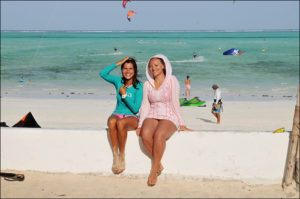 Like most large capitals in developing countries, there is congestion and traffic jam. The Tuk-tuk or motorcycle can be the only savior during the chaotic evenings within the city center. Many tourists overlook Dar es Salaam as an important tourist destination and only use it as a gateway to the major national parks in the countryside or to the islands of Pemba and Zanzibar. Dar es Salaam is a city with its own attractions with pristine beaches, monuments, artisan centers, shopping centers, restaurants, night clubs, museums and botanical gardens to mention but a few. You can also take part in many activities as we shall discuss in a moment. You might also want to read about the tourist attractions in Mombasa, the things to do in Kampala and the top activities in Arusha. We even have an article on the places to visit while in Zanzibar. For those who are interested in a full safari, you should check out our amazing 3 days Serengeti Safari or the 6 days gorilla trekking and Ngorongoro crater safari.
Like most large capitals in developing countries, there is congestion and traffic jam. The Tuk-tuk or motorcycle can be the only savior during the chaotic evenings within the city center. Many tourists overlook Dar es Salaam as an important tourist destination and only use it as a gateway to the major national parks in the countryside or to the islands of Pemba and Zanzibar. Dar es Salaam is a city with its own attractions with pristine beaches, monuments, artisan centers, shopping centers, restaurants, night clubs, museums and botanical gardens to mention but a few. You can also take part in many activities as we shall discuss in a moment. You might also want to read about the tourist attractions in Mombasa, the things to do in Kampala and the top activities in Arusha. We even have an article on the places to visit while in Zanzibar. For those who are interested in a full safari, you should check out our amazing 3 days Serengeti Safari or the 6 days gorilla trekking and Ngorongoro crater safari.
Things to do in Dar es Salaam
Night clubs and bars: There are several high end bars and night clubs within the city center and in the suburbs where you can go a party after a hard day of work or during the weekend. You can check out Havoc Nightspot or High Spirit for the best wines and music. If you want to catch the latest soccer matches on giant screens, you should look no further than Slow Leopard. They have a variety of imported beers that you can sip as you wait for the game to begin. If you are looking for the best music bar, then check out O’Donovan’s Reggae Bar or Jollies Club. Walking at night in Dar es Salaam is very risky. Ensure that you move with a trusted person or in car.
Go Shopping: The Slipway (located along Yacht Club Road) offers one of the best shopping experiences in Dar es Salaam. This enclave is a collection of shops and boutiques selling high quality and 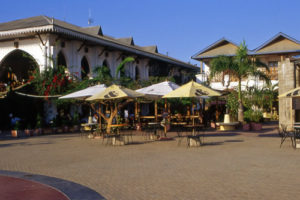 stylish clothing from within and outside the country. There is also a large supermarket, a hotel and a bookshop within the facility. The Slipway is a favorite hangout for expatriates and those looking for rare ingredients that cannot be easily found in the city. After shopping, you can then go to the open-air restaurant and bar known as The Waterfront for international cuisines and beautiful views of the Msasani Bay. If you are interested in fishing or visiting the islands outside the city, you will find several boats and departure points close to The Slipway.
stylish clothing from within and outside the country. There is also a large supermarket, a hotel and a bookshop within the facility. The Slipway is a favorite hangout for expatriates and those looking for rare ingredients that cannot be easily found in the city. After shopping, you can then go to the open-air restaurant and bar known as The Waterfront for international cuisines and beautiful views of the Msasani Bay. If you are interested in fishing or visiting the islands outside the city, you will find several boats and departure points close to The Slipway.
Ride on a Tuk-Tuk Ride: Like in Mombasa Kenya, a trip to Dar es Salaam is incomplete without taking a ride on one of these intriguing bikes. They are similar to the ones used in many Asian countries. Tuk-Tuks are very suited for navigating though crowded streets and reaching to areas where vehicles would have a problem. They are not expensive and can be got on short notice. Prepare to bargain for a good price depending on where you are heading to. You can also hire it for a city tour or just for the fun of it.
Kariakoo Market: In order to understand the culture and lifestyle of people in a new place, one needs to visit their main markets. Kariakoo market is one of the most interesting markets in Dar es Salaam. 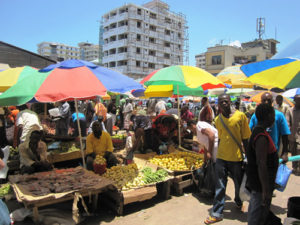 The market is characterized by blocks of small shops, hawkers and roadside vendors. It is the place to go to if you want to buy home stuff (fish, fruits, meat, vegetables, hardware and clothes), get the best bargains or have a glimpse of everyday life in Dar es Salaam. In Kariakoo bargaining is important to get the best deals. Do not take your valuables because there are several cases of pick pocketing. Also remember to dress appropriately to avoid unnecessary attention, stares and even whistles. By the end of your visit to the market, you would have experienced the kind of life lived by the ordinary city resident.
The market is characterized by blocks of small shops, hawkers and roadside vendors. It is the place to go to if you want to buy home stuff (fish, fruits, meat, vegetables, hardware and clothes), get the best bargains or have a glimpse of everyday life in Dar es Salaam. In Kariakoo bargaining is important to get the best deals. Do not take your valuables because there are several cases of pick pocketing. Also remember to dress appropriately to avoid unnecessary attention, stares and even whistles. By the end of your visit to the market, you would have experienced the kind of life lived by the ordinary city resident.
Kivukoni Fish Market: This is the place where fresh fish from the ocean is bought. It is located in a suburb known as Kivukoni. The best time to go is early in the morning(7:00am) when the fishermen 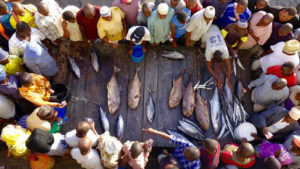 have just returned from a night of fishing to auction their catches. It is also the time when you will get the freshest fish and catch most of the action as fishermen bargain with retailers and consumers. The main species are squid, snappers and crabs. One of the great things about going to this fish market is the impressive collection of fish species from the Indian ocean. For a bird eyes view of the market, one needs to climb one of the flight stairs leading to the offices in the market. If you cannot take home fish for one reason or another, you can make an order and have it fried for you from one of the restaurants.
have just returned from a night of fishing to auction their catches. It is also the time when you will get the freshest fish and catch most of the action as fishermen bargain with retailers and consumers. The main species are squid, snappers and crabs. One of the great things about going to this fish market is the impressive collection of fish species from the Indian ocean. For a bird eyes view of the market, one needs to climb one of the flight stairs leading to the offices in the market. If you cannot take home fish for one reason or another, you can make an order and have it fried for you from one of the restaurants.
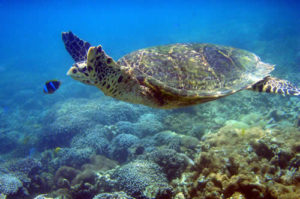 Support the Hawksbill turtle breeding program: Hawksbill turtles are critically endangered but the good news is that there are several organizations helping protect and save the remaining individuals – Sea Sense is one such organization. They have taken the lead in organizing expeditions to protect the reptiles right from the breeding ground. They ensure that the turtle eggs hatch successfully and that most of the young find their way back into the ocean. Tourists are led by a Guide to the hatching ground in Masaki after some time on a boat. Most of the proceeds go into the Hawksbill conservation program.
Support the Hawksbill turtle breeding program: Hawksbill turtles are critically endangered but the good news is that there are several organizations helping protect and save the remaining individuals – Sea Sense is one such organization. They have taken the lead in organizing expeditions to protect the reptiles right from the breeding ground. They ensure that the turtle eggs hatch successfully and that most of the young find their way back into the ocean. Tourists are led by a Guide to the hatching ground in Masaki after some time on a boat. Most of the proceeds go into the Hawksbill conservation program.
Get the best views of Dar Es Salaam: For the best views of the harbor and city of Dar es Salaam, you need to go to the Sawasdee restaurant of the New Africa Hotel. This restaurant is special not only for the Thai food but because it revolves and an in the process offers you amazing views of the city.
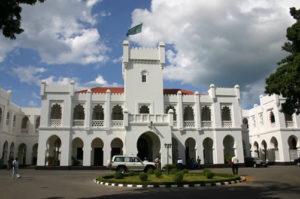 Visit the colonial architectural buildings: In the 19th century, Dar es Salaam was a major city under the rule of the Sultan of Zanzibar. When the Germans and later the British took over control, it became the main commercial and administrative center of Tanzania. The Arabs, British and Germans all left a mark in the city with pieces of architecture, monuments and buildings like the St. Joseph’s Cathedral, the Azania Front Lutheran Church, several mosques and other great buildings. The State house was rebuilt by the British in 1922 with a blend of African, European and Arabian architectural style. We shall discuss some of these architectural wonders as separate attractions on their own sooner or later.
Visit the colonial architectural buildings: In the 19th century, Dar es Salaam was a major city under the rule of the Sultan of Zanzibar. When the Germans and later the British took over control, it became the main commercial and administrative center of Tanzania. The Arabs, British and Germans all left a mark in the city with pieces of architecture, monuments and buildings like the St. Joseph’s Cathedral, the Azania Front Lutheran Church, several mosques and other great buildings. The State house was rebuilt by the British in 1922 with a blend of African, European and Arabian architectural style. We shall discuss some of these architectural wonders as separate attractions on their own sooner or later.
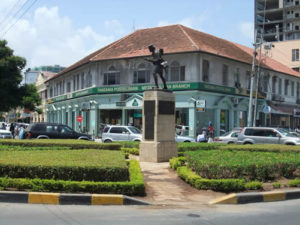 Askari Monument: Tanzania was one of the African countries that supplied troops to Britain during World War 1. The Tanzania soldiers fought as Carrier Corps. The Askari monument was built to remember these brave soldiers. The bronze stature depicts a soldier in a World War 1 army uniform carrying a bayonet which points towards the harbor. There is an inscription in praise of the brave soldiers written by the famous British poet and writer Rudyard Kiling. Askari monument is found in the middle of a roundabout that separates Maktaba street and Samora Avenue.
Askari Monument: Tanzania was one of the African countries that supplied troops to Britain during World War 1. The Tanzania soldiers fought as Carrier Corps. The Askari monument was built to remember these brave soldiers. The bronze stature depicts a soldier in a World War 1 army uniform carrying a bayonet which points towards the harbor. There is an inscription in praise of the brave soldiers written by the famous British poet and writer Rudyard Kiling. Askari monument is found in the middle of a roundabout that separates Maktaba street and Samora Avenue.
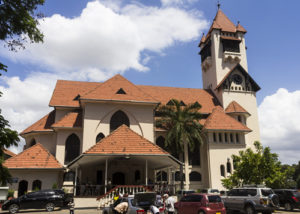 Azania Lutheran Church: This iconic structure was built at the harbor by a group of German missionaries in 1898. Its red-tile roof is a prominent feature at the harbor. The cathedral sits close to many of the major tourist attractions in the city. Once you reach the church, you will always find a Guide who is eager to take you around the church. Apart from the interior architecture, one other place to visit within the church premises is the bell tower. You can rest from the beautiful church gardens or go and attend prayers with the city residents. You may be requested to make a donation to the church.
Azania Lutheran Church: This iconic structure was built at the harbor by a group of German missionaries in 1898. Its red-tile roof is a prominent feature at the harbor. The cathedral sits close to many of the major tourist attractions in the city. Once you reach the church, you will always find a Guide who is eager to take you around the church. Apart from the interior architecture, one other place to visit within the church premises is the bell tower. You can rest from the beautiful church gardens or go and attend prayers with the city residents. You may be requested to make a donation to the church.
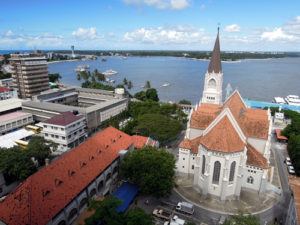 St. Joseph Cathedral: This striking cathedral was also built by the German catholic missionaries between 1897 and 1902. It’s also a prominent building within the harbor and acts as the main cathedral for the archdiocese of Dar es Salaam. The Cathedral is built with some interesting architectural works including shingled spire, stained-glass windows and a vaulted interior. Most of inscriptions and art works are in German including the structure above the altar.
St. Joseph Cathedral: This striking cathedral was also built by the German catholic missionaries between 1897 and 1902. It’s also a prominent building within the harbor and acts as the main cathedral for the archdiocese of Dar es Salaam. The Cathedral is built with some interesting architectural works including shingled spire, stained-glass windows and a vaulted interior. Most of inscriptions and art works are in German including the structure above the altar.
Visit the National Museum and house of culture: This facility is one of the top cultural sites in Tanzania. It was built in 1940 and in memory of King George V. The Museum attempts to describe and illustrate all that there is to know 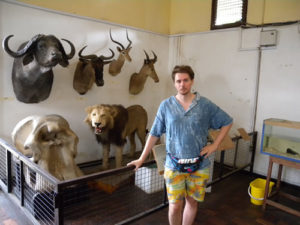 about Tanzania through art, biology, archaeology and ethnography. The Museum takes you through the different phases of the country’s past including insights into the lives of the early Islamic traders. On display are fossils of the earliest humans that where dug up from Olduvai Gorge by the famous archaeologists Louis Leakey and Mary Leakey. The skull of the Nutcracker man which was unearthed in 1959 is a key attraction. You can also learn about the country’s slave history, the different tribes and the era of colonialism. Other items of interest are the musical instruments, ornaments, traditional crafts and vintage cars used by the former president Julius Nyerere. Entering the museum costs 6500 Tanzanian shillings and it is opened from 9am to 6pm.
about Tanzania through art, biology, archaeology and ethnography. The Museum takes you through the different phases of the country’s past including insights into the lives of the early Islamic traders. On display are fossils of the earliest humans that where dug up from Olduvai Gorge by the famous archaeologists Louis Leakey and Mary Leakey. The skull of the Nutcracker man which was unearthed in 1959 is a key attraction. You can also learn about the country’s slave history, the different tribes and the era of colonialism. Other items of interest are the musical instruments, ornaments, traditional crafts and vintage cars used by the former president Julius Nyerere. Entering the museum costs 6500 Tanzanian shillings and it is opened from 9am to 6pm.
Visit Temple Road: This is the road where most of the Hindu temples are found. If you want to see their unique architecture or are of the Hindu faith and just want to meditate, then you should go here.
Go kite surfing: Dar es Salaam and Zanzibar offer some of the best kite surfing experience in Tanzania. The country receives more and more tourists who are interested in kite surfing especially during the winter season in Europe and The United states. The warm breeze from the Indian ocean can be a good relief from the cold winters. The best spot for kite surfing is in Paje village on the island of Zanzibar but there are several other spots where the activity is organized. Kunduchi Kite School rents out equipment and also offers kite surfing lessons to those who are inexperienced. The lessons are only carried out when the tides and wind are ideal.
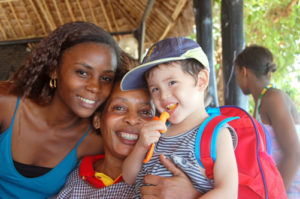 Learn how to sail at the Dar es Salaam Yacht Club: If you are a seasoned water-sport enthusiastic or have interest in sailing but are inexperienced, you should become a member of this Club. Apart from the training for beginners, the club also organizes sport fishing, diving and kayaking. You can take the whole family with you and have a great time in sections of the ocean that are only open to a few. You will also get to meet many influential people at the club and make important connections.
Learn how to sail at the Dar es Salaam Yacht Club: If you are a seasoned water-sport enthusiastic or have interest in sailing but are inexperienced, you should become a member of this Club. Apart from the training for beginners, the club also organizes sport fishing, diving and kayaking. You can take the whole family with you and have a great time in sections of the ocean that are only open to a few. You will also get to meet many influential people at the club and make important connections.
Pugu Hills Nature Reserve: This reserve is locating outside the city – about 25 kilometers from the city center. The reserve has remarkable biodiversity and is an excellent place for cave exploration, nature walks, birding and relaxation away from the city chaos. It receives many visitors during the weekends. If you want a more private tour, then you should go during the weekdays.
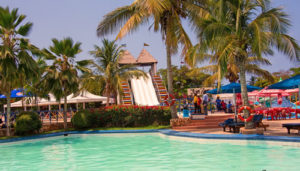 Take the kids to Kunduchi Water Park: If you are wondering where to take the kids over the weekend, then you should try Kunduchi Water Park. The theme/water park is believed to be the largest in East Africa. The park is built in the northern part of the city and is excellent for families interested in swimming. You can float down the river or go up a raised platform and jump straight into one of the pools. Apart from the swimming facilities, the park also has a go kart circuit and several play grounds to entertain children throughout the day. Drinks and snacks are in plenty and can be bought from on one the bars and restaurants at the facility.
Take the kids to Kunduchi Water Park: If you are wondering where to take the kids over the weekend, then you should try Kunduchi Water Park. The theme/water park is believed to be the largest in East Africa. The park is built in the northern part of the city and is excellent for families interested in swimming. You can float down the river or go up a raised platform and jump straight into one of the pools. Apart from the swimming facilities, the park also has a go kart circuit and several play grounds to entertain children throughout the day. Drinks and snacks are in plenty and can be bought from on one the bars and restaurants at the facility.
Attend the city’s Festivals and shows: Like largest cities, Dar es Salaam hosts several cultural and religious shows that are held during certain days/months of the year. The Charity Goat Race is organized  every September on specially built tracks to raise money for local charities and schools. Expect to find many tourists showing up to witness the race. The Mzalendo Halisi Music Festival is all about music and culture. The festival brings together over 100 traditional artists at Posta Grounds. If you are interested in fashion, then don’t miss the fashion week in November. The Swahili fashion week attracts regional designers to the National Museum to show the latest designs. The fashion week offers good networking opportunities if you are a designer or looking at a career in fashion. Last but not list is the Diwali Hindu festival. This festival is organized throughout the world to celebrate the triumph of good over evil. Residents of Dar es Salaam join the large Hindu community to party and commemorate the event.
every September on specially built tracks to raise money for local charities and schools. Expect to find many tourists showing up to witness the race. The Mzalendo Halisi Music Festival is all about music and culture. The festival brings together over 100 traditional artists at Posta Grounds. If you are interested in fashion, then don’t miss the fashion week in November. The Swahili fashion week attracts regional designers to the National Museum to show the latest designs. The fashion week offers good networking opportunities if you are a designer or looking at a career in fashion. Last but not list is the Diwali Hindu festival. This festival is organized throughout the world to celebrate the triumph of good over evil. Residents of Dar es Salaam join the large Hindu community to party and commemorate the event.
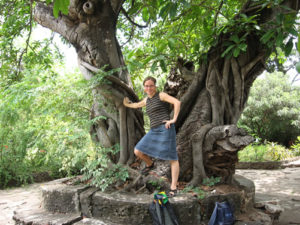 Explore the Botanical Gardens: The Botanical gardens are home to the Dar es Salaam Horticultural Society. Established in 1893 by the first Director of Agriculture, the gardens were used as a plot for carrying out experiments on new species of trees/crops. Nature lovers now go to the place for its serenity but also to discover rare plants like blue jacaranda, purple bougainvillea, red hibiscus and scarlet flame trees. The overall size of the gardens has shrunk due to encroachments but it is still the only other place where one can see the rare coco-de-mer palm tree apart from the Seychelles islands.
Explore the Botanical Gardens: The Botanical gardens are home to the Dar es Salaam Horticultural Society. Established in 1893 by the first Director of Agriculture, the gardens were used as a plot for carrying out experiments on new species of trees/crops. Nature lovers now go to the place for its serenity but also to discover rare plants like blue jacaranda, purple bougainvillea, red hibiscus and scarlet flame trees. The overall size of the gardens has shrunk due to encroachments but it is still the only other place where one can see the rare coco-de-mer palm tree apart from the Seychelles islands.
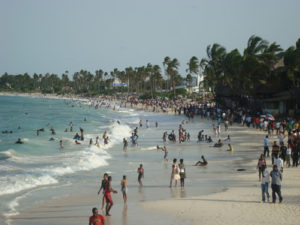 Visit the Coco Beach: Sometime referred to as Oyster bay, this beach is found in the Msasani peninsula – an area where most of the affluent class live. It is the most popular beach in the city and a favorite hangout for expatriates, middle calls and affluent locals. The beach is characterized by golden sand, palm trees, street food, restaurants, clubs and bars. The Oyster Bay Shopping Centre is also found here and is a popular shopping ground. The best time to go to this beach is over the weekend. This is when you get to see many of the city’s residents partying with loud music, booze and food. Coco beach is also where many of the top concerts are held. The waters are not 100% clean and swimming is generally discouraged although you will find some people in the water. For the best swimming opportunities, you need to go to the nearby islands and beaches.
Visit the Coco Beach: Sometime referred to as Oyster bay, this beach is found in the Msasani peninsula – an area where most of the affluent class live. It is the most popular beach in the city and a favorite hangout for expatriates, middle calls and affluent locals. The beach is characterized by golden sand, palm trees, street food, restaurants, clubs and bars. The Oyster Bay Shopping Centre is also found here and is a popular shopping ground. The best time to go to this beach is over the weekend. This is when you get to see many of the city’s residents partying with loud music, booze and food. Coco beach is also where many of the top concerts are held. The waters are not 100% clean and swimming is generally discouraged although you will find some people in the water. For the best swimming opportunities, you need to go to the nearby islands and beaches.
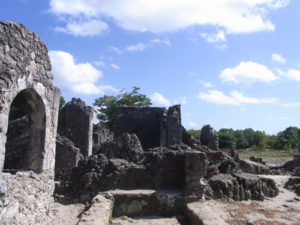 Visit the town of Bagamoyo: This historical town was once the capital of the German East Africa colony which included Rwanda, Burundi, and Tanzania. Bagamoyo has the same beautiful setting that is seen in Lamu and Mombasa is Kenya. The Swahili culture thrives here as a result of intermarriages between the first Arabs to the island and the local population. While in Bagamoyo, you can visit the pristine beaches, ancient mosques and old churches. The town also has the only university specializing in arts known Chuo Cha Sanaa. If you are lucky to visit at the right time, you could take part in the Bagamoyo Festival of Arts and culture. This festival is organized annually hence attracting large crowds and bringing life to a usually quiet town.
Visit the town of Bagamoyo: This historical town was once the capital of the German East Africa colony which included Rwanda, Burundi, and Tanzania. Bagamoyo has the same beautiful setting that is seen in Lamu and Mombasa is Kenya. The Swahili culture thrives here as a result of intermarriages between the first Arabs to the island and the local population. While in Bagamoyo, you can visit the pristine beaches, ancient mosques and old churches. The town also has the only university specializing in arts known Chuo Cha Sanaa. If you are lucky to visit at the right time, you could take part in the Bagamoyo Festival of Arts and culture. This festival is organized annually hence attracting large crowds and bringing life to a usually quiet town.
Bongoyo Island: This is a small marine reserve and uninhabited island found close to the city of Dar Es Salaam. It is the nearest place to go if you want to discover the Indian ocean, the marine life and take 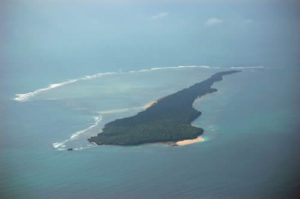 part in all the amazing water activities that the East African coast is famous for. The waters are clean and suitable for swimming and other water sports. You can spend the whole day snorkeling, lazing in the sand beaches or eating fries and fish. Do not forget to search the coral reefs for angelfish, clownfish, starfish, sea urchins and other sea creatures. Alternatively, you can go for a nature walk alone the trails behind the beach and the baobab trees. To get to the island, you would need to take a boat which costs about $20 for a 30-minute trip. The island has a limited number of self-contained roofed huts for rent hence planning in advance may be necessary.
part in all the amazing water activities that the East African coast is famous for. The waters are clean and suitable for swimming and other water sports. You can spend the whole day snorkeling, lazing in the sand beaches or eating fries and fish. Do not forget to search the coral reefs for angelfish, clownfish, starfish, sea urchins and other sea creatures. Alternatively, you can go for a nature walk alone the trails behind the beach and the baobab trees. To get to the island, you would need to take a boat which costs about $20 for a 30-minute trip. The island has a limited number of self-contained roofed huts for rent hence planning in advance may be necessary.
Jangwani and Mbudya Islands: If you are done with visiting Bongoyo Island, you can also spend a few days at the beaches of Janwani and Mbudya. These islands are uninhabited and considered marine reserves. Like all the other beaches in the Indian ocean, the scenery is amazing (blue waters, palm trees and long stretches of white sand) hence offering a perfect escape from the hustle and bustle of the city. They are also better preserved compared to many others in the area and one can swim or go snorkeling knowing that the waters are clean. While on the Island, you can order for freshly caught fish, barbecue, cold drinks and other sea foods. To get to these two islands, you need to hire a boat. Accommodation is in form of self-contained thatched huts.
Swim with whale sharks: Between the months of October and March, large numbers of whale sharks storm the cost of Mafia to feast on the plankton rich waters. If you are lucky enough to be in Dar es Salaam and you are the adventurous type, then swimming with these amazing creatures would make for a very memorable holiday. Short excursions are organized by all the resorts in Mafia.
Kigamboni beach: This beach is located in the Southern part of Dar es Salaam. To get to the place, you need to use the main ferry. The ferry carries heavy loads including cars and motorcycles. Kigamboni beach is remarkable because its peaceful and generally quiet compared to the noisy city center. Several hotels and lodges have been established close to the beach which you can use as a base to explore the area, enjoy the cool breeze/waves from the Indian ocean, swim or dine.
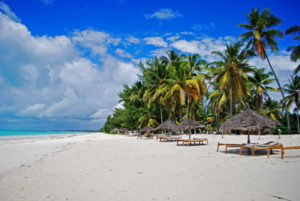 Visit Zanzibar: After visiting all of the best beaches and islands in Dar es Salaam, you might have a few more days to spare. We highly recommend visiting the island of Zanzibar. Visiting this amazing island is one of the highlights for any tourist in Tanzania. A combination of crystal clear blue waters, white sand beaches, a multicultural environment and beautiful scenery makes this one of the best islands to visit in Africa. You will get a chance to take part in amazing water sports, swim, relax, visit the old town, monuments and spice plantations. We are coming up with an article about the tourist attractions in Zanzibar.
Visit Zanzibar: After visiting all of the best beaches and islands in Dar es Salaam, you might have a few more days to spare. We highly recommend visiting the island of Zanzibar. Visiting this amazing island is one of the highlights for any tourist in Tanzania. A combination of crystal clear blue waters, white sand beaches, a multicultural environment and beautiful scenery makes this one of the best islands to visit in Africa. You will get a chance to take part in amazing water sports, swim, relax, visit the old town, monuments and spice plantations. We are coming up with an article about the tourist attractions in Zanzibar.
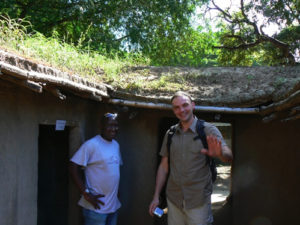 The Village Museum: Also known as Makumbusho (‘reminders’ in English) Village Museum. The Village museum is built ten kilometers away from the city center. This Museum offers tourists an opportunity to experience the culture and way of living of the many tribes in Tanzania. It offers something different from the National Museum and attempts to recreate the way traditional homes are organized in the rural villages of Tanzania. The facility is large and covers about 15 acres. As you move to the different sections, you will learn about the costumes and tools used by the different tribes of Tanzania. You will also learn how the huts are constructed, attend the traditional dances and admire the work of local craftsmen (pottery, weaving and carving). Entrance to the facility is about 6500 Tanzanian shillings.
The Village Museum: Also known as Makumbusho (‘reminders’ in English) Village Museum. The Village museum is built ten kilometers away from the city center. This Museum offers tourists an opportunity to experience the culture and way of living of the many tribes in Tanzania. It offers something different from the National Museum and attempts to recreate the way traditional homes are organized in the rural villages of Tanzania. The facility is large and covers about 15 acres. As you move to the different sections, you will learn about the costumes and tools used by the different tribes of Tanzania. You will also learn how the huts are constructed, attend the traditional dances and admire the work of local craftsmen (pottery, weaving and carving). Entrance to the facility is about 6500 Tanzanian shillings.
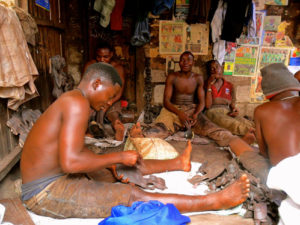 Mwenge Wood Carvers’ Village: If you are wondering where to get the best local souvenir while in Dar es Salaam, look no further than this place. The village (Also known as Makonde locally) is located outside town and brings together some of the best artists in the country. These artisans specialize in African sculptures that are carved out from timber. There is a lot to see at the exhibition rooms but if you take your time, you will find something special to buy among the locally made bags, masks, kitchenware, shoes and clothes. If you are interested in supporting disabled artists, you can visit Wonder Workshop. The artists at Wonder Workshop produce world class jewelry, stationary, candles, car parts, metal, glass and sculptures from recycled materials.
Mwenge Wood Carvers’ Village: If you are wondering where to get the best local souvenir while in Dar es Salaam, look no further than this place. The village (Also known as Makonde locally) is located outside town and brings together some of the best artists in the country. These artisans specialize in African sculptures that are carved out from timber. There is a lot to see at the exhibition rooms but if you take your time, you will find something special to buy among the locally made bags, masks, kitchenware, shoes and clothes. If you are interested in supporting disabled artists, you can visit Wonder Workshop. The artists at Wonder Workshop produce world class jewelry, stationary, candles, car parts, metal, glass and sculptures from recycled materials.
Tingatinga Art Center and Nafasi Art Space: After visiting the Mwenge Wood Carver’s Village, you should also check out this famous Art Centre. Tingatinga painting is unique to this part of Africa and is a 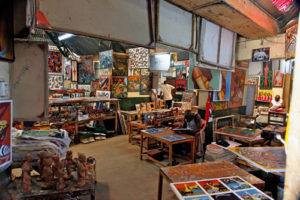 worth possessing if you are interested in unique art. Tingatinga art became popular in the 1960s and is characterized by colorful imaginative figures (animals, plants and people) which are drawn in bright colors. It is gaining popularity in many African countries. Tingatinga Arts Cooperative Society is found close to Oyster Bay and is home to over one hundred local artists. If Tingatinga art isn’t your thing, you can checkout Nafasi Art Space. They strive to be the best contemporary Centre of arts in the country. The Centre attracts the best in the country as well as regional and international artisans.
worth possessing if you are interested in unique art. Tingatinga art became popular in the 1960s and is characterized by colorful imaginative figures (animals, plants and people) which are drawn in bright colors. It is gaining popularity in many African countries. Tingatinga Arts Cooperative Society is found close to Oyster Bay and is home to over one hundred local artists. If Tingatinga art isn’t your thing, you can checkout Nafasi Art Space. They strive to be the best contemporary Centre of arts in the country. The Centre attracts the best in the country as well as regional and international artisans.
Buy Tanzanian Jewelry: If you are looking for fine local jewelry that competes well internationally, then you should acquire tanzanite jewelry. Tanzanite is a rare gemstone that is unique to Tanzania. It is one of the most beautiful blue gemstones in the world and is only found at the slopes of Mount Kilimanjaro. Tanzanite changes color when it gets into contact with light offering an amazing spectacle. Tanzanite was first discovered in 1967. It is rare compared to diamonds yet cheaper. You can visit The Tanzanite Dream along Mataka Road to see the stones or buy some.
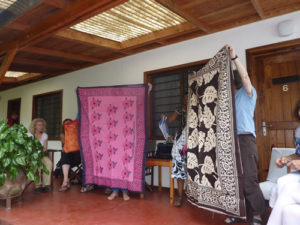 Do some Kanga Shopping at Uhuru Street: Kangas are brightly colored fabric that are used to wrap around the body. They are rectangular in shape with complex patterns and messages in the local language. Kangas are very popular among the locals with almost every woman owning one in Dar es Salaam. They wear them, use them for carrying babies or using them to carry items on their heads. The best quality fabrics and design are bought from Uhuru street.
Do some Kanga Shopping at Uhuru Street: Kangas are brightly colored fabric that are used to wrap around the body. They are rectangular in shape with complex patterns and messages in the local language. Kangas are very popular among the locals with almost every woman owning one in Dar es Salaam. They wear them, use them for carrying babies or using them to carry items on their heads. The best quality fabrics and design are bought from Uhuru street.
Try out Continental and local cuisines: As a city of diverse culture, there are countless restaurants offering both local and international cuisines to residents of the city. Nyama Choma (roasted goat’s meat) and Mishkaki (skewered or grilled meat) are very popular with the locals. Mishkaki is very tasty especially when ordered with chips, tomatoes or chili sauce. Where can you find the best local and international dishes?
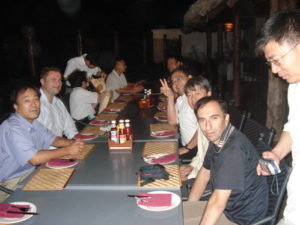 Grace Shop specializes in local dishes like mchicha and ugali while Mamboz Corner BBQ is known for the best grilled chicken (African style). The best Swahili dishes are made at Chef’s Pride but you can also order for masala chips, chapatti, roasted/fried chicken, mishkaki and nyama choma. Other restaurants specializing in local food include Barbecue House, Gembros Eatery and Ali’s.
Grace Shop specializes in local dishes like mchicha and ugali while Mamboz Corner BBQ is known for the best grilled chicken (African style). The best Swahili dishes are made at Chef’s Pride but you can also order for masala chips, chapatti, roasted/fried chicken, mishkaki and nyama choma. Other restaurants specializing in local food include Barbecue House, Gembros Eatery and Ali’s.
There are also Chinese, Italian, French and Indian restaurants in different parts of the city. Addis in Dar is thought to serve the best Ethiopian dishes. If you are wondering where to get the best Indian food, then you should go to the Upanga area (center of the city). You will find several Indian restaurants including Bawarchi, Chapan Bhog, Delhi Dar Bar and Patel Grounds. If you want to mingle with the expat community in Tanzania, then you should visit Zuane Trattoria (Pizzas) or the bakery Epi d’Or. If you want an even more classy place to eat out, you can go to Serena Hotel and check out their popular buffets. Street food is also very popular among the ordinary peasant and the working class. The food sold on the streets are chapattis, roasted maize, roasted chicken, groundnuts and snacks. Street food is usually sold in busy sections of the city.
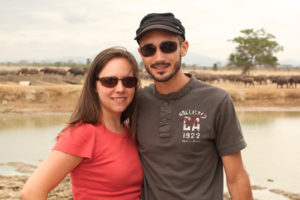 Go on a safari: Although Tanzania is well known for the amazing wildlife experience in the Serengeti, Tangire and Ngorongoro Crater. There are other lesser known national parks and reserves that are located close to the Dar es Salaam. They include Ruaha, Selous and Mikumi National Park. Ruaha and Selous are special because they are one of the few last remaining habitats for wild dogs. Mikumi is one of the leading tourist attractions in Tanzania. You can spot many of Africa’s famous creatures like wildebeest, lions, zebra, giraffe, elephants, impala and several species of birds. The fewer number of visitors ensures that you have the wilderness and facilities all to yourself making up for a truly memorable private safari.
Go on a safari: Although Tanzania is well known for the amazing wildlife experience in the Serengeti, Tangire and Ngorongoro Crater. There are other lesser known national parks and reserves that are located close to the Dar es Salaam. They include Ruaha, Selous and Mikumi National Park. Ruaha and Selous are special because they are one of the few last remaining habitats for wild dogs. Mikumi is one of the leading tourist attractions in Tanzania. You can spot many of Africa’s famous creatures like wildebeest, lions, zebra, giraffe, elephants, impala and several species of birds. The fewer number of visitors ensures that you have the wilderness and facilities all to yourself making up for a truly memorable private safari.
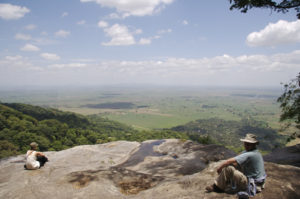 Mountain Climbing: Udzungwa Mountains National Park offers one of the best mountain climbing experiences in Tanzania. Hiking to the top of the mountain involves walking through thick forests and waterfalls. You will encounter unique species of birds, butterflies and primates along the trial. Climbing to the top of the mountain takes about half a day. It is important to pack snacks and water to avoid getting hungry and dehydrated.
Mountain Climbing: Udzungwa Mountains National Park offers one of the best mountain climbing experiences in Tanzania. Hiking to the top of the mountain involves walking through thick forests and waterfalls. You will encounter unique species of birds, butterflies and primates along the trial. Climbing to the top of the mountain takes about half a day. It is important to pack snacks and water to avoid getting hungry and dehydrated.
Additional Information about visiting Dar es Salaam
Dar es Salaam can be visited throughout the year given that it lies close to the equator (relatively stable weather). The best time to visit Dar es Salaam depends on what one is planning to do. Why? Because the country has two rainy and dry seasons. The months between March and May comes with heavy rains. Heavy rains are also received between November and early December. In between, we have what is known as the dry season. If you are targeting the beaches, islands and the wildlife in the countryside, then the best times to visit are during the months of January to March and June to October. The skies are clear during these months and ocean water blue.
Dar es Salaam has an interesting combination of people and cultures from many parts of the world because of its trading history. The Arabs, Indian and Europeans settled here over 2 centuries ago resulting in intermarriages with the local population. There is a sizeable number of people with Omani, Indian and European descent. The main language spoken is Swahili.
The chief currency in Dar es Salaam is the Tanzanian shilling although US Dollars are generally accepted. Try to have some hard cash with you while in the city because credit cards may not be accepted everywhere. There is no shortage of accommodation facilities in Dar es Salaam. Everything depends on your budget. You can find luxury, mid-range and budget hotels offering high quality services.


Outstanding presentation